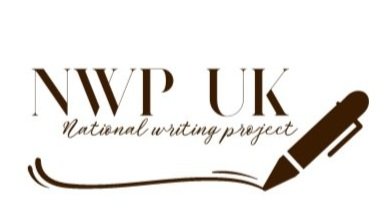March Writing Prompts
Jeni Smith
Writing in march
I thought that this spring I would draw our daily writing prompts from some of the many books of advice and prompts for writers that are available to us. I hope that you can find things that work for you and for others with whom you work.
1. Scraps
Atavar, M. (2009) How To Be An Artist. Kiosk Publishing.
Not strictly a book for writers, but for anyone with a creative practice. It is full of good ideas and talking points. Here’s an extract:
Scraps
In times of difficulty, it has sometimes happened to me that there’s only one image/idea in my notebook.
If so, then that’s where I have to begin.
Remember that you can begin the process of making with –
· One line.
· One note.
· One word.
In fact, that’s where you have to begin. You are always, inevitably, starting with the blank sheet. There are twelve dimensions of loneliness within the empty page.
Stop waiting for the great idea, the great grant, the great producer. You begin from here, where you are now. You begin from no space and add letter by letter, word by word, until you fill one sentence and then one page.
Address your fear of the empty page.
2. Objects in a list
Burroway, J.(2003) Imaginative Writing The Elements of Craft. New York, London: Longman.
This is a corker of a book. I love what Janet Burroway has to say and how she says it. Like her indispensable Writing Fiction, this is packed with good advice, intriguing writing tasks and a superb range of example texts. Here is one:
Try this:
Make a quick list of objects you can see around you from where you sit now. Take the number that represents the month of your birth and count down your list that many places. Take the word there and begin writing about it. Write anything the word suggests to you – memory, metaphor, ideas, other objects, colours, places, anything. Don’t worry about the order of your ideas or the form of what you write. Sentences are good – but not necessary. Keep writing for ten minutes. It will seem a long time. You will probably have a page or two. Do the ideas connect in any way? Are some metaphors? Do some suggest a larger idea or a teaching out from the object you started with? Are there any ideas, words, images that you’d like to expand on?
3. Animal – human
Carter, J. (2000) Creating Writers: A creative writing manual for Key Stage 2 and Key Stage 3. Abingdon: Routledge.
This is another generous book, filled with ideas that range over many subjects, genres and styles. One of the things I especially like about this book is the way it is threaded through with advice and observations from a pantheon of writers.
Animal – human
JAN DEAN: Think of an animal and turn it into a person. Take a bear, for example. If that bear became a person, what would they look like? They’d be big and ambling. They’d have big hands and big feet, and they might bump into furniture. They’d be quite strong. They might have a sweet tooth – and eat a lot of fish! So, you can get a character simply from an animal’s physical characteristics. Now write a paragraph or so about that character coming into a room. Give clues as to what your original animal was, but without mentioning the animal’s name.
4. Juxtaposition
Clark, R. P. (2013) Writing Tools 50 essential strategies for every writer. New York, NY: Little, Brown and Company.
Practical, humorous, this book guides the reader/writer to read with purpose and to apply what we learn to our own writing. This is a very serviceable toolkit. It is good on reading as a writer, on the length of sentences and word order. It draws attention to the ways in which these work. It will provide you with plenty of short writing exercises which focus on how sentences work and the choices a writer can make.
Juxtaposition
1. Feature photographers often see startling visual details in juxtaposition: a street person wearing a corsage, a massive sumo wrestler holding a tiny child. Keep your eyes open for such visual images and imagine how you would represent them in your writing.
2. Reread your own work to see if surprising juxtapositions are hiding inside. Can you revise your work to take better advantage of these opportunities?
3. Now that you have a name for this technique, you will begin to recognise its use more often in literature, theatre, movies, music, and journalism. Make a mental note of such examples. And look for them in real life as you research your writing.
5. Anglo-Saxon word stock
Clark, R. P. (2013) How to Write Short. New York, NY: Little, Brown and Company.
This book is crammed with humour and good advice about writing short texts. Each, short, chapter contains writing prompts. Try these from the chapter headed Vary Hard and Soft Words:
1. Use the Anglo-Saxon word stock to create a staccato effect or to end a phrase with a snap and a punch.
2. Make a random list of English synonyms in which one word in a pair is short and the other long. To get you started: lit/illuminated; jail/incarcerate; piss/urinate.
3. Look through your recent writing to see if you can substitute a long word for a short one, or vice versa. Which feels better to write?
4. Read the passage aloud to check for pace, rhythm, flow, style and meaning.



